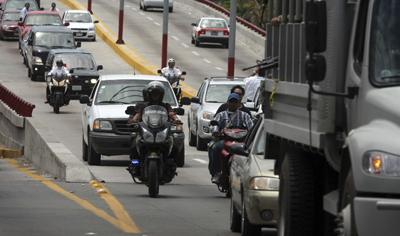New York, July 26, 2011–The decapitated head and body of veteran reporter Yolanda Ordaz de la Cruz was found early this morning, according to officials in the Mexican state of Veracruz. The journalist was abducted on Sunday by armed men as she left her house.
Ordaz covered the police beat for the main Veracruz city newspaper, Notiver, but her body was found near the building of the newspaper Imagen. Reporters in Veracruz told CPJ that the gruesome killing and the placement of the body appeared to be an ominous message meant for the press. In a press conference, the state prosecutor, Reynaldo Escobar Pérez, denied that Ordaz’s murder was linked to her work, and said the evidence seemed to indicate that her killers were members of organized crime. However, a spokeswoman for the prosecutor’s office, Magda Zayas, told CPJ that the journalist’s work was one of the lines of investigation they are following.
A note found with the body seems to connect Ordaz’s murder to the killing of the widely known columnist Miguel Angel López Velasco, his wife, and son, a photographer with the newspaper, on June 20, according to Zayas. She said the note was signed “Carranza,” and said: “Friends can also betray you.” The Associated Press reported that Veracruz state investigators have identified former traffic police officer Juan Carlos Carranza Saavedra as the main suspect in the López murder.
Mexico’s Human Rights Commission said it would open its own investigation into Ordaz’s killing, according to the AP.
Ordaz is the fourth journalist from Veracruz to be killed this year. In addition to López and his son, the body of Noel López Olguín, a columnist with the newspaper La Verdad de Jáltipan who went missing in March, was found buried in a clandestine grave on May 31.
“Yolanda Ordaz’s murder is part of a troubling lethal trend that has made Veracruz an extremely dangerous place to be a journalist,” said Carlos Lauría, CPJ’s senior program coordinator for the Americas. “We urge Mexican authorities to conduct a thorough investigation, establish the motives of the crime, and put an end to impunity in journalists’ slaying by bringing Ordaz’s killers to justice.”
Reporters in Veracruz city told CPJ that Ordaz had worked for as long as three decades covering the police and was very close to López and his family.
Drug-related violence now makes Mexico one of the world’s most dangerous countries for the press, according to CPJ research. Fifteen journalists, including Ordaz, have been killed since 2010, at least four in direct reprisal for their work. CPJ is investigating whether the other eleven deaths were related to the journalists’ work. According to CPJ’s 2011 Impunity Index, Mexico’s rating worsened for the third consecutive year, with 13 cases of journalists’ murdered unsolved, putting it at eighth on the list. The index identifies countries worldwide where journalists are murdered regularly and governments are unable or unwilling to solve the crimes.
